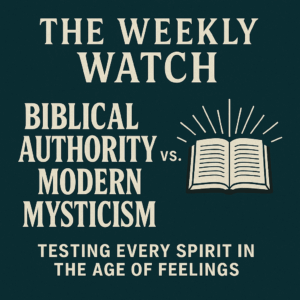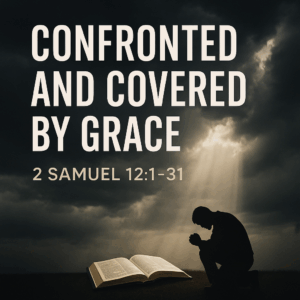⏱️ Estimated Reading Time: 5 min read
Protestant evangelical believers hold fast to one of the doctrines of the Reformation, Sola Scriptura, the teaching that the Scriptures alone hold the highest authority in the Christian life. However, many believers in the evangelical tradition do not read the Bible on a regular basis*. Of those that do read the Bible regularly, many do not understand the basic storyline of the Bible. For many, the Bible is an anthology of stories that have little or nothing to do with each other. In reality, however, the Bible has a meta narrative that if properly understood, can aid the reader in better understanding what the passage is saying and how it applies in a modern context.
For this reason, a good study bible is essential for personal study and Bible reading. Many study Bibles have come to market over the past few decades. I have found several of them are helpful and insightful to personal study of the Bible*. Recently, however, Crossway has published a study Bible that I have found particularly insightful to aiding the reader to understand the basic storyline of the Bible and how each passage of Scripture points to one thing, Jesus. In 2013, Crossway published the ESV Gospel Transformation Bible and have published an updated version in March 2019 as the ESV Gospel Transformation Study Bible.
The English Standard Version (ESV) has stood as a reliable “essentially literal” translation of the Bible since 2001. In a day when many Bible readers prefer readability over accuracy, the ESV proves to be not only an accurate but highly readable translation solidly standing in the reformation heritage of Bible translations. It lends itself to personal study, memorization, and teachability. For this reason, the ESV has been a preferred translation for many pastors, seminary students, and churches for the better part of two decades. The ESV has shaped the way a generation of disciples approaches, studies, and teaches the Bible. It will continue to be a trusted translation for many years to come.
Over the years, Crossway has published several versions of the ESV that lend itself to different ways to approach the Bible. This was achieved primarily through their groundbreaking ESV Study Bible. Which begs the question, why do we need another study Bible? While other study Bible’s focus on aiding the reader through the passage of the Bible via study notes focusing on difficult passages, the ESV Gospel Transformation Study Bible (GTSB) focuses on aiding the reader in understanding the meta narrative of the Bible. The notes do not explain every passage or difficult topic in detail. Instead, the GTSB points out how biblical stories and themes connect and point to the person and work of Jesus. For example, this proves extremely helpful when one is reading through passages in Leviticus, 1&2 Kings, and many of the Prophets. It is important to keep in mind when reading difficult passages in the Old Testament that “all the promises of God find their Yes in him [Jesus]” (2 Corinthians 1:20, ESV). The GTSB helps the reader make the connection between the text and its ultimate fulfillment in Jesus.
The primary way that the GTSB achieves its goal of aiding the reader in seeing Jesus in all of Scripture is through the study notes. Under the leadership of General Editor Bryan Chapell, the ESV assembled an all-star team to write the study notes for the GTSB. The team includes pastors, scholars, and denominational leaders such as Michael Horton, Miles Van Pelt, Bruce Ware, Ray Ortlund, Nancy Guthrie, Jared Wilson, Kevin DeYoung, and J.D. Greear among others. For this reason, the study notes read in a pastoral/exhortational tone. Given the purpose of the GTSB study notes, the reader will notice that they cover much more ground than more traditional study Bibles. Other study Bibles will provide commentary on each verse or smaller passages. However, the GTSB study notes provide commentary on much longer passages. This approach to biblical study aides the reader in understanding a passage in a broader canonical context.
In addition to the study notes, the GTSB provides other helpful resources to aid the reader in study. These features include articles on biblical theology, covenants, and the gospel as seen in the Old Testament as well as the New Testament, among others. These articles are insightful for the reader and help build a framework for a better understanding of the storyline of the Bible. The GTSB also includes a helpful topical index and an excellent concordance, which allows the reader to better locate specific passages for further study.
The ESV is a time tested and widely trusted translation, and the GTSB is an excellent resource for personal and group Bible study. For these reasons, I would highly reccomend it to all believers. It is a great tool for growing the reader in understanding the way all of Scripture points to and is fulfilled in Jesus. The GTSB achieves what Jesus did with the two disciples on the road to Emmaus, “And beginning with Moses and all the Prophets, he interpreted to them in all the Scriptues the thing concerning himself” (Luke 24:27, ESV).
*Lifeway Research found that, in a 2012 study, only 56% of churchgoers read the Bible once a week, while 40% read the Bible rarely or only once of month. https://lifewayresearch.com/2012/09/06/bible-engagement-in-churchgoers-hearts-not-always-practiced/
*A list of good study bibles I would recommend in addition to the GTSB: ESV Study Bible, HCSB Study Bible, Life Application Study Bible (pick your translation), The MacArthur Study Bible.




